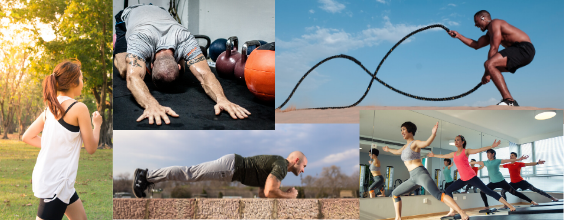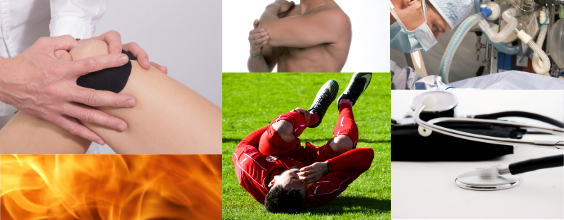For details of the next Touch for Health training dates please contact me. Please find below the full IKC Touch for health training Syllabus
Touch for Health Kinesiology Level I:
The art of muscle testing & 14-Muscle/Meridian Balancing “As-You-Go”
Touch for health training, Introductory kinesiology workshop for lay people and health professionals
Accurate indicator muscle testing; “challenging” reflexes to find deeper levels to balance
Emotional stress release (for present distress)
14 muscle-tests as biofeedback for posture and 14 major energy meridians
5 reflex systems and nutrition for balancing muscles, posture and energy
Simple pain control techniques
Improve Sensory, auditory and visual perception and physical range of motion with auricular and visual balancing
Level 1 is open to all. It is suitable for the lay-person who has no prior knowledge of muscles/anatomy/posture or Chinese acupuncture energy theory.
Most kinesiologists learn TFH during their training.
Official IKC TFH Level 1 Syllabus
Introduction to Touch for Health
What is Touch for Health?
History, Triangle of Health, Opposing Muscle Theory
Switching On
Water
Central Meridian Check
Switching Points
Cross Crawl for Fun
Auricular Energy
Meridian Massage
Accurate Indicator Muscle Testing
Introduction to Muscle Testing
Education, Communication and Permission: the Self-Responsibility Model
Pre-checks for accurate muscle testing – Physical, Mental/Emotional, Biochemical
Accurate Indicator Muscle Testing
Challenges
Switching On
Central Meridian Energy Check
Hydration
Subjective Evaluation
Muscle/Meridian Balancing Touch Reflexes
Spinal Reflexes
Neurolymphatic Massage Points (reflexes)
Neurovascular Holding Points (reflexes)
Energy Meridians from Acupuncture
Muscle Origin-Insertion Technique
Challenging a Balancing Reflex
Muscles that Won’t “Switch-off”
Emotional Stress Release
Using Food to Balance Specific Muscles
Other Balancing Techniques
Posture Awareness
Cross Crawl for Fun
Auricular Energy
Visual Inhibition
Simple Pain Techniques
Surrogate Testing
Goal Balancing
Balancing-As-You-Go Procedure
Muscle Tests and Balancing Reflexes for 14 Muscles and Related Meridians:
Muscle Related Meridian
Supraspinatus Central
Teres Major Governing
Pectoralis Major Clavicular Stomach
Latissimus Dorsi Spleen
Subscapularis Heart
Quadriceps Small Intestine
Peroneus Bladder
Psoas Kidney
Gluteus Medius Circulation/Sex
Teres Minor Triple Warmer
Anterior Deltoid Gall Bladder
Pectoralis Major Sternal Liver
Anterior Serratus Lung
Fascia Lata Large Intestine
Touch for Health Kinesiology Level 2:
Exploring energy maps & One-Point Balancing
PRE-REQUISITE: TFH Level 1; practical and written exercises from Level 1
14 additional muscle tests
Circuit locating to find an optimal touch reflex, or alarm points to indicate excess energy
Emotional stress release (for future performance)
Assess energy patterns in the 24-hour Wheel & Five Element (seasonal) cycles and find the “One-Point” to balance all the muscles/energy meridians
Food Testing- identify foods that raise or lower energy
Acupressure Holding Points, neuromuscular reflexes including spindle cell and golgi tendon
More simple pain control including “Meridian Walking” technique for recent/localised pain
Muscle/Meridian Balancing Touch Reflexes
Circuit Locating
Precheck Evaluations with Circuit Locating
Spindle Cell Mechanism
Golgi Tendon Apparatus
Acupressure Holding Points
Cerebral Spinal Technique
Yin and Yang
Balancing Using the Meridian Wheel
Alarm Points and Over-Energy
Beaver Dam
Triangles and Squares
Midday/Midnight Relationship
The Law of Five Elements (Shen and Ko Cycles)
Other Balancing Techniques
Food Testing for Biogenic, Biostatic and Biocidic Foods
Emotional Stress Relief (ESR) for Future Performance
Simple Pain Techniques
Time of Day Balance
Meridian Massage
Meridian Walking
Cerebrospinal Technique
Cross Crawl Integration
One-Point Balancing According to the Wheel and Five Elements
Muscle Tests and Balancing Reflexes for 14 Additional Muscles:
Muscle Related Meridian
Anterior Neck Flexors & Brachioradialis Stomach
Lower & Middle Trapezius Spleen
Rectus Abdominis Small Intestine
Sacrospinalis Bladder
Iliacus Kidney
Adductors & Piriformis Circulation/Sex
Sartorius Triple Warmer
Popliteus Gall Bladder
Rhomboid Liver
Middle Deltoid Lung
Quadratus Lumborum Large Intestine
Touch For Health Kinesiology Level 3:
The Body Deal – Reactive Muscle Balancing
PRE-REQUISITE: TFH Level 2: practical and written exercises from Level 2
Review and practice 1-point balancing (Wheel & Five Elements)
Five Element sound balancing
14 additional muscles (this completes the TFH 42 Muscles)
Emotional stress release (for past experiences/trauma)
Balancing reactive muscles for combined muscle function and long-standing pain relief
Chinese 5-Element colour balance
Balance “gaits” function and physical co-ordination
Luo points (acupressure holding points to balance yin/yang within an element)
Pulse points for assessing/balancing excess energy
Pain tapping to reduce or eliminate long-standing pain
Balancing Techniques
Five Element Colour Balance
Five Element Emotions
Five Element Balancing with Goal and Emotion
Five Element Balancing with Food
Sedation Techniques
ESR for Past Trauma
Pulse Check
Pain Tapping for Chronic Pain
Reactive Muscles Review
Other Balancing Techniques
Facilitation and Inhibition
Circuit Retaining Mode
Resetting Reactive Muscle Relationships
Gait Checking and Balancing
Muscle Tests and Balancing Reflexes for 14+ Additional Muscles:
Muscle Related… Meridian
Posterior Neck Extensors & Levator Scapulae Stomach
Opponens Pollicis Longus & Triceps Spleen
Transverse and Oblique Abdominals Small Intestine
Anterior and Posterior Tibials Bladder
Upper Trapezius Kidney
Gluteus Maximus Circulation Sex
Gracilis, Soleus & Gastrocnemius Triple Warmer
Coracobrachialis & Diaphragm Lung
Hamstrings Large Intestine
Touch For Health Kinesiology Level 4:
Going Deeper – Postural Analysis & Balancing, Review & Consolidation
PRE-REQUISITE: TFH Level 3: practical and written exercises from Level 3
Complete 42 muscle balance: standing, sitting or lying
Analyze and balance specific postural deviations
Reactive muscle review
Figure 8 energy balancing
Past balancing to holistically relieve stress from past trauma throughout mind and body
Postural stress release for stress held in “muscle memory” associated with postures/experiences
Balancing Techniques
Figure Eight Energy
Five Elements and Meridian Review
Five Element Emotions
Five Element Sound Balance
Acupressure Holding Point Theory
Luo Points
Time of Day Balance
Postural Stress Release
Neurolymphatic Release
Reactive Muscles Review
Postural Analysis
Muscle Tests and Balancing Reflexes for:
42 Muscles Head to Toe, Standing
42 Muscles Head to Toe, Prone and Supine
Outcomes and Applications of Touch for Health:
IKC Instructor Training Requirements
Aims of the International Kinesiology College
Guidelines for Practical Assessment
The TFH Synthesis “Database” Balancing Procedure
Claire Cutler-Casey is a professional Kinesiology Practitioner and Touch For Health instructor as well as delivering a variety of business and well-being workshops designed to help you navigate the process of change.
If you would like to book a 1:1 Kinesiology session, please click here.
You can also join our online community here.



